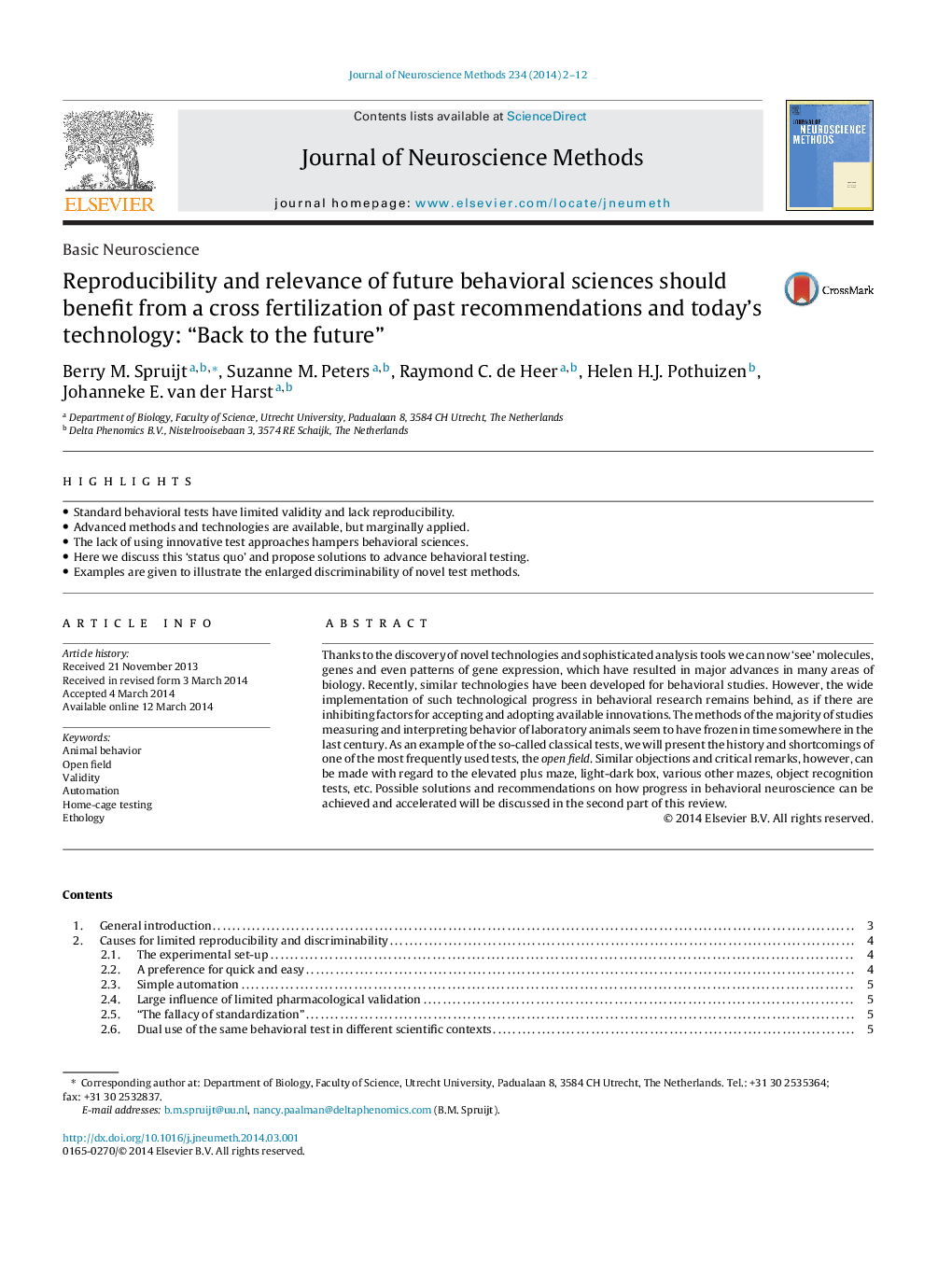| Article ID | Journal | Published Year | Pages | File Type |
|---|---|---|---|---|
| 4334941 | Journal of Neuroscience Methods | 2014 | 11 Pages |
•Standard behavioral tests have limited validity and lack reproducibility.•Advanced methods and technologies are available, but marginally applied.•The lack of using innovative test approaches hampers behavioral sciences.•Here we discuss this ‘status quo’ and propose solutions to advance behavioral testing.•Examples are given to illustrate the enlarged discriminability of novel test methods.
Thanks to the discovery of novel technologies and sophisticated analysis tools we can now ‘see’ molecules, genes and even patterns of gene expression, which have resulted in major advances in many areas of biology. Recently, similar technologies have been developed for behavioral studies. However, the wide implementation of such technological progress in behavioral research remains behind, as if there are inhibiting factors for accepting and adopting available innovations. The methods of the majority of studies measuring and interpreting behavior of laboratory animals seem to have frozen in time somewhere in the last century. As an example of the so-called classical tests, we will present the history and shortcomings of one of the most frequently used tests, the open field. Similar objections and critical remarks, however, can be made with regard to the elevated plus maze, light-dark box, various other mazes, object recognition tests, etc. Possible solutions and recommendations on how progress in behavioral neuroscience can be achieved and accelerated will be discussed in the second part of this review.
